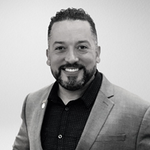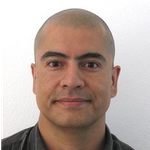- Welcome Remarks
Vassilis Theocharides - Keynote Session 1 • Emerging and Practical Ideas for How HR and L&D Professionals Become Strategic Business Partners
Dave UlrichThe work environment is facing a revolution and, more than ever, companies and practitioners needs to understand the importance of creating value through HR / L&D. This is your chance to be part of an immersive journey moving from efficiency to functional excellence, and best practice from strategic HR/L&D. In this interactive session you will be able to improve HR/L&D through technology, enhance organizational culture through innovations and optimize the right leadership. Don´t miss this opportunity to be part of an interactive session that will enable you to create impact. Dave Ulrich will cover how to:
1. Serve all stakeholders inside and out through HR/L&D activities
2. Improve HR/L&D through technology enabled efforts
3. Upgrade individual talent through L&D innovations
4. Improve culture through L&D innovations
5. Ensure the right leadership through L&D innovations
6. Innovate HR/L&D activities through guidance efforts
In particular, this session will be highly interactive with each participants (or team of participants in a company) sharing their current HR/L&D challenges and receiving advice on how to improve. As a results of this interactive session, participants should have ideas with impact on how they can help deliver key results. - Conversation with Dave Ulrich
Dave Ulrich•Nelson Santiago - General Session 1 • Secrets of Master Virtual Trainers: 5 Keys to Online Classroom Success
Cindy HuggettWhat do master trainers do when facilitating interactive live online classes? This session will cover five key skills: advance preparation, engaging attendees, multitasking effectively, using your voice, and handling unexpected challenges. Whether you are new or have been facilitating virtual classes for years, and regardless of which virtual platform you use, you will be sure to leave this session with new ideas, tips, and techniques! Engage online attendees using common virtual classroom tools. Effectively handle typical challenges that arise during virtual classes. Assess your current virtual delivery skills and create an action plan for improvement.
- A Conversation with Cindy Huggett
Cindy Huggett•German Paris - General Session 2 • Develop Yourself Now and for the Future with the ATD Capability Model
Elizabeth HannahCalling all talent development practitioners! ATD recently rolled out an updated competency framework titled the Talent Development Capability Model that illustrates what talent development practitioners need to KNOW and DO to develop themselves, others and their organizations.
Join an expert from ATD National as she take us on a tour of the new model, demonstrate interactive tools and share insights from how practitioners in the region have reported their skills levels. Learn how the new model has impacted ATD’s global certification programs – and how certification can positively impact your career.
• Understand the components of the new model - Discover the knowledge and skills that will empower the growth and development of talent development professionals.
• Apply the interactive tools to identify areas of growth for yourself or your whole team - Assess skill strengths and gaps for development resources to build a plan to close gaps
• Compare skill strengths and gaps of those in the region to TD professionals to those around the world
• Describe the updates to ATD’s certification programs and how they can impact your career. - Conversation with Elizabeth Hannah
Elizabeth Hannah•German Paris - Lunch Networking Break
- General Session 3 • Power skills: the key skills for the job
Claudia AlfaroEl contexto COVID-19 en las organizaciones ha evidenciado que la adaptación tiene que ser una habilidad clave para cualquier colaborador en una organización; así como la comunicación, apertura y colaboración. Sin embargo, siendo habilidades tan intangibles y de difícil medición no suelen ser el foco de los entrenamientos corporativos, cuando en realidad son la única base que puede sostener el aprendizaje constante de habilidades más duras. En este espacio:
- Aprenderás sobre las habilidades innatas de los humanos (Habilidades humanas o Power Skills) - Cómo diseñar experiencias de aprendizaje que tengan como foco el uso de estas habilidades y poder medirlas. - A conversation with Claudia Alfaro
Claudia Alfaro•Jose Manuel Aggio - General Session 4 • The Secret to Evaluating Nearly Any Type of Training
James (Jim) Kirkpatrick•Wendy KirkpatrickAre you wondering how to evaluate microlearning, elearning, and more? Learn how to show the value
of nearly any type of training through the use of a blended evaluation plan. Discover key questions to
ask and considerations to keep in mind as you design and implement your programs. - A Conversation with Wendy Kirkpatrick and Jim Kirkpatrick
James (Jim) Kirkpatrick•Wendy Kirkpatrick•Jose Manuel Aggio - General Session 5 • 2021: Transforming Learning into Business Impact
Ignacio De la Vega GarcíaEducation, like any other industry, is undertaking one of the most significant and accelerated transformations of all times. “New normal” does not explain the need to reinvent significant aspects of our personal, educational and business lives and the power of education to redesign and transform businesses and contribute to the most pressing challenges in our societies is greater than ever.
- A Conversation with Ignacio De la Vega García
Ignacio De la Vega García•Jose Manuel Aggio - Networking Break
Enjoy this moment to meet new people and network
- General Session 6 • Latest innovations and trends in TD and learning
Monica Almeida•Flora AlvesThe world seems to be upside down. In the blink of an eye work and home mingled as never before. Everything has changed, from the way we purchase things to the way we relate to each other. It’s not different when it comes to learning, especially having terms as Reskilling and Upskilling pushing us not just to make it different but to make the difference.
In this session you are going to be part of a discussion based on the latest searches that shows us what are the hot trends and innovation in the Learning and Development field.
You are also going to learn that we should seek trends as a reference of what is coming and adjust them to our organizational culture and audience. - A Conversation with Flora Alves and Monica Almeida
Monica Almeida•Flora Alves•Igor Cozzo - General Session 7 • Developing leaders to boost a cultural transformation
Caroline Carpenedo - A Conversation with Caroline Carpenedo
Caroline Carpenedo•Igor Cozzo - Final remarks + End of 1st Day
Vassilis Theocharides
- Welcome day 2
Vassilis Theocharides - Learning Track • 5 Best Practices to create Killer Latam ready eLearnings
Sergio AtristainAs a reminder, this content is to be objective, not product centric. Design content for the betterment of the learning community.
On this session you will learn what are the most important best practices to develop elearning courses for a Latin American audience. We will describe typical problems that organizations face during the translation and localization of their eLearning courses and how to avoid them. We would also go over some of the less evident eLearning assets that might cause cultural problems. Finally, we will give you tips to keep a budget tight Latam eLearning project and to avoid timeline issues.
• List (3) Learning Takeaways for attendees:
• Best practices to create a truly global course
• Avoid potential issues during the translation and localization project
• Tips to save on costs and avoid expensive delays in course deployment - A conversation with Sergio Atristain
Sergio Atristain•Fernando Lasky - Keynote Session 2 • Wired to Grow 2.0: Critical Updates In The Neuroscience Of Learning
Britt AndreattaThe neuroscience of learning has recently evolved, adding new understanding to how the brain learns, builds memories, processes failure, and shifts behavior. This research is shaping how educators should design learning and how to best leverage technology to maximize the learner's experience. Discover how to leverage brain science to enhance learning in your organization so that you can drive sustained behavior change for the metrics that matter.
- Conversation with Britt Andreatta
Britt Andreatta•Fernando Lasky - General Session 8 • Innovation in a digital world
Ann Quadagno•Catherine Rickelman - Conversation with Catherine Rickelman & Ann Quadagno
Ann Quadagno•Catherine Rickelman•Fernando Lasky - Lunch Networking Break
- ATD Mini Bootcamp • Defending budgets through data, evidence and impact measurement, in a world in pandemic and economic crisis
Rodrigo Lara FernandezDebido a la pandemia en que el mundo ha estado envuelto desde hace casi un año, no sólo la salud física y mental se ha visto afectada, sino también la economía, complicando a las organizaciones y los países. En este contexto, los presupuestos para formación y desarrollo se ven amenazados y necesitamos argumentos para defenderlos. En esta sesión, revisaremos tres argumentos potentes para conseguir y defender presupuestos: datos, evidencia y medición.
Esto, lo lograremos por medio de los siguientes objetivos y entregables:
• Identificar los elementos claves de la Medición del ROI en formación
• Escoger los métodos adecuados para recoger evidencia y datos de un programa
• Analizar la evidencia y los datos de manera creíble
• Contar la historia con datos
Esta actividad será realizada de manera virtual sincrónica, online. Esta sesión de 90 minutos estará focalizada en generar una experiencia de formación y aprendizaje positiva. - Networking Break
- General Session 9 • Delivering Results That Executives (and Others) Will Love
Jack PhillipsLearning and talent development expenditures have grown significantly in the past two decades, and few leaders would argue that learning is critical for organizational growth. Though, investments in programs generate mixed results. On one hand, the volume of programs has increased; on the other, business impact is less evident. Learning professionals try to measure their way to results—that is, to implement a measurement strategy to capture evidence of value. Overall, however, this attempt to capture value is not working. Learning and development practitioners must move from a value-capture focus to a value-creation focus to drive results.
Learning and talent development programs should make a difference, and these results should drive organizational change. All stakeholders involved in initiating, designing, developing, facilitating, implementing, and supporting programs must see the results of their efforts. The challenge is that few learning and development professionals have data to show top executives that their programs make a difference to the bottomline.
This session shows how to use design thinking to deliver and measure up to five levels of evaluation, including impact and ROI, and will showcase the status of measurement and evaluation by providing examples of measures at each level of the evaluation process. This session will also focus on criteria for selecting programs at the business impact and ROI levels, introduce effective methods to convert measures to monetary value, and how to identify intangibles.
Objectives
After attending this session, participants will be able to:
1. List the data sets possible from learning and talent development programs by categories, including ROI.
2. Identify the categories that are desired by top executives and other key stakeholders.
3. Explain how these measures are derived and developed.
4. Pursue a plan to measure results and communicate results to different audiences. - A conversation with Jack Phillips
Jack Phillips•Wally Pretelt-Kieswetter - LATAM Panel • HR and L&D Change Management & Digital Transformation
Alfredo Castro•Luis Maria Cravino•Inigo Sanchez-Cabezudo•Lina Nakata - LATAM Panel Discussion • Live Moderated Q&A
Alfredo Castro•Luis Maria Cravino•Inigo Sanchez-Cabezudo•Lina Nakata - Final remarks + End of Conference
Vassilis Theocharides


























